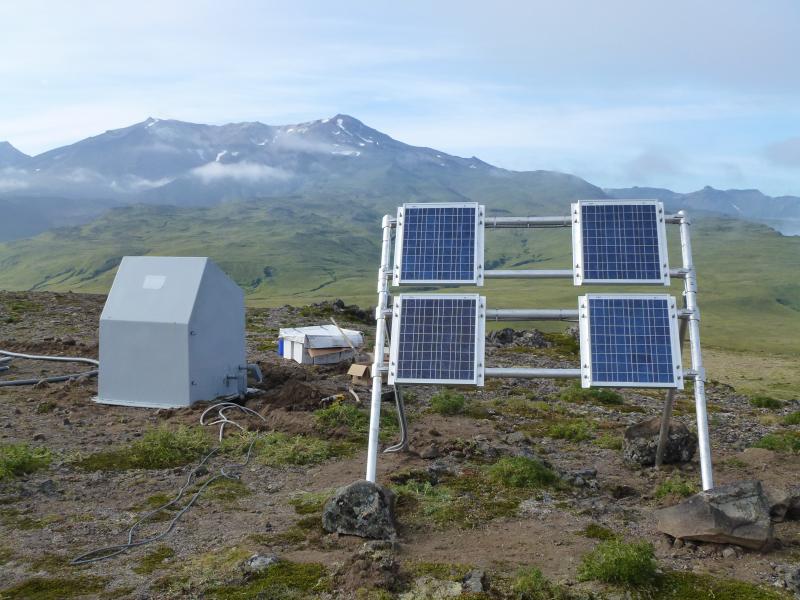Seismology
What is seismic monitoring?
Often, magma rising towards the surface at a volcano causes background seismicity (earthquake activity) to increase over a period of months or weeks, as the magma interacts with, and displaces or breaks, the surrounding rock. Volcanic earthquakes are usually quite small, with magnitudes less than two. As the eruption nears, seismologists sometimes see a unique type of volcano seismic activity known as long-period seismicity, thought to be associated with degassing of the rising magma. Finally, as an explosive eruption begins, the stronger seismic signals generated by an explosive eruption can be detected. In Alaska, this permits accurate determination of the time of onset of an eruption, including overnight or during poor weather when visual observations are not possible. This is critical information for agencies concerned with the safe operation of aircraft both above and downwind of Alaska volcanoes, as volcanic ash is very harmful to jet engines.
Seismometers measure ground shaking. These vibrations can be caused by many different processes besides magma movement, including hydrothermal gas and fluid movement, tectonic earthquakes, avalanches, and even stormy winds and surf. To see examples of how signals from different phenomena may appear on seismic “webicorder” data, please visit: https://volcanoes.usgs.gov/vhp/seismic_signals.html and https://www.avo.alaska.edu/webicorders/
Seismic monitoring at AVO
AVO maintains networks of seismometers on select Alaska volcanoes to locate and detect the typically small earthquakes associated with volcanic processes. A typical seismic network consists of four or more seismometers installed close to the volcanic vent. Data is transmitted in real-time through digital telemetry to AVO’s facilities in Anchorage. Once received, the data is automatically processed and carefully reviewed by a seismologist.
Seismometers are often co-located with other instruments, such as webcameras, GPS stations, and infrasound arrays. Because most Alaska volcanoes are remote, AVO’s seismic stations are typically equipped with a hut to shelter the electronics, marine batteries, and solar panels to power the instruments, and are designed to withstand Alaska’s harsh weather and creatures great and small.



